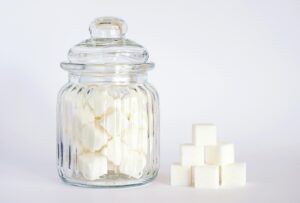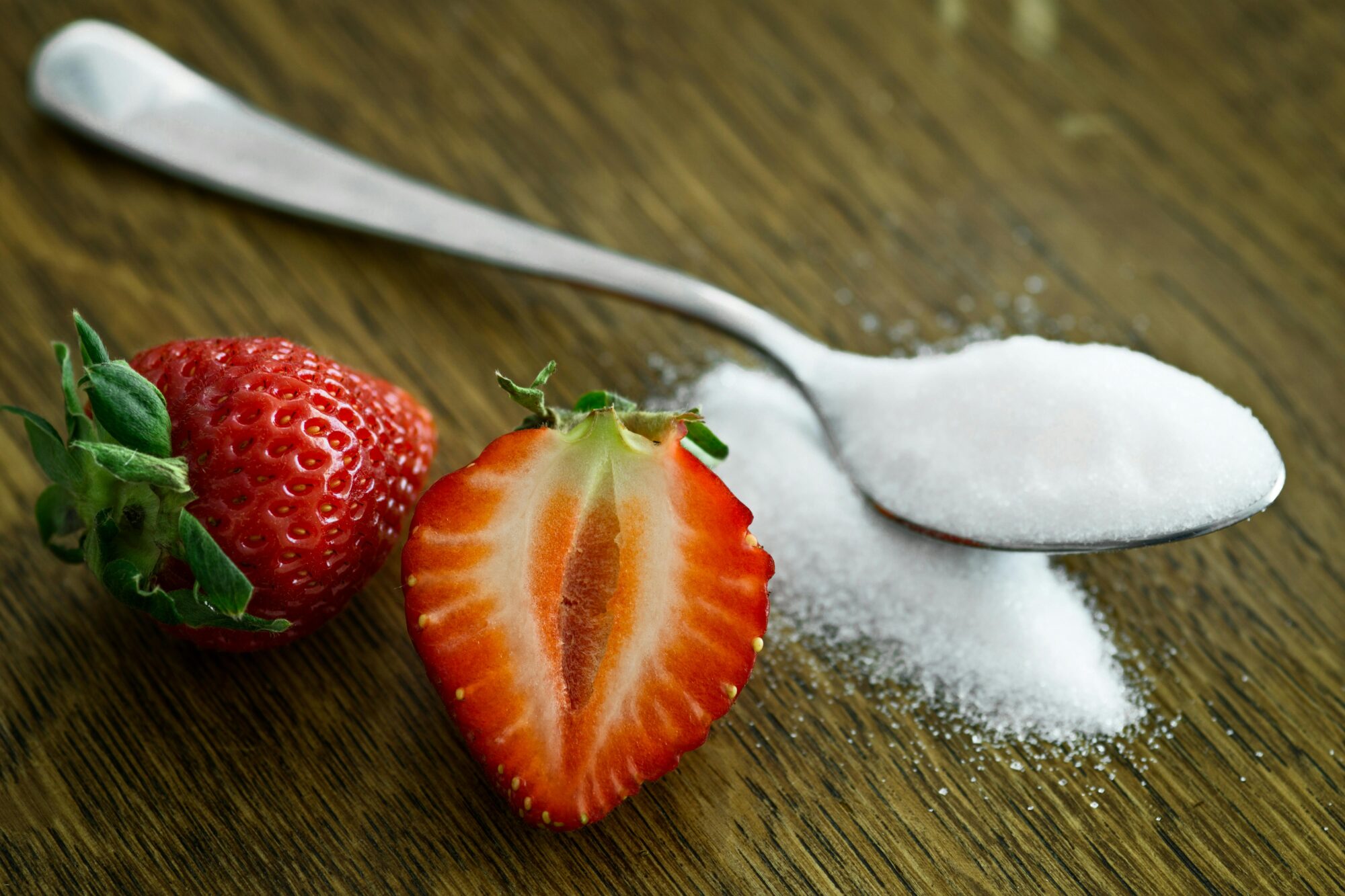Let’s face it—eating healthy isn’t as simple as it used to be. You ditch the sugar, soda, pass on dessert, and fill your cart with labels that scream “natural,” “organic,” “fat-free,” or “wholesome.” You feel like you’re making all the right moves—go you!
But then reality smacks you in the face when you realize that your favorite “healthy” granola bar has more sugar than a Snickers. Ouch.
Welcome to the sticky situation of hidden sugar. It’s lurking where you least expect it—disguised with sweet-sounding names and snuck into your favorite foods. You don’t have to swear off sugar completely, but understanding how it hides and how to spot it? That’s the real health flex.
Why Hidden Sugar Deserves Your Attention

Maybe you’re thinking, “So my salad dressing has a little sugar. Big deal, right?”
Actually… yeah, it kind of is.
Hidden sugar isn’t always consumed in massive spoonfuls. It shows up in small amounts throughout your day, quietly accumulating. And over time, that adds up in ways you don’t want.
Too much sugar can lead to:
- Unwanted weight gain
- Energy crashes and mood swings (hello, sugar rollercoaster!)
- Increased risk of insulin resistance and type 2 diabetes
- Skin issues and inflammation
- Poor heart health and liver stress
Even if you’re working out, sleeping well, and eating your veggies, those sneaky added sugars could be sabotaging your progress—and your health.
Sugar by Any Other Name Is Still… Sugar
Manufacturers are smart. They know “sugar” on a label might make you put that product back on the shelf. So they use clever aliases—over 60 different names, in fact.
Here are a few of the most common sugar disguises:
- Agave nectar
- Brown rice syrup
- Evaporated cane juice
- Fruit juice concentrate
- High-fructose corn syrup (HFCS)
- Organic cane sugar
- Maltodextrin
- Molasses, honey, maple syrup
- Anything ending in “-ose” (like fructose, dextrose, sucrose, maltose)
Many of these sound “natural,” but your body processes them just like any other sugar. The effect on your insulin, liver, and waistline? Pretty much the same.
10 ‘Healthy’ Foods That Are Secretly Loaded with Sugar
Grab your grocery list. We’re about to decode some sneaky culprits you probably didn’t suspect.
1. Flavored Yogurt
That small container of “berry blast” yogurt? It could have 15–25 grams of sugar. That’s 4 to 6 teaspoons in one go—and it doesn’t even taste that sweet sometimes.
What to do instead:
Choose plain Greek yogurt and sweeten it naturally with fresh fruit or a drizzle of honey. You’re still getting the probiotics—without the sugar crash.
2. Granola & Granola Bars
These guys wear the health halo proudly. They’re often marketed as the ultimate fitness snack. But most granolas are toasted with honey, brown sugar, or syrups, pushing sugar content over 20g per serving. Granola bars? Basically oatmeal cookies with sneakers on.
Smart swap:
Look for bars with under 6g of sugar and ingredients you can pronounce—or make your own with nuts, seeds, and oats.
3. Protein Bars
Protein-packed? Sure. But many are also sugar-loaded. Some bars boast 20+ grams of protein—and sneak in 20+ grams of sugar as well. If it tastes like candy, it probably is.
Better choice:
Find bars with less than 5g sugar and 10g+ protein. Or snack old-school with a boiled egg and an apple.
4. Bottled Smoothies & Fruit Juices

“But it’s made with fruit!” Yes—and also fruit juice concentrate and zero fiber. Some bottled smoothies and “green juices” contain 40–50g of sugar in a single bottle.
Your move:
Blend your own smoothies at home using whole fruit, leafy greens, and unsweetened almond milk or water. Bonus: you keep the fiber.
5. Breakfast Cereal (Even the “Healthy” Kinds)
Many cereals—even those with “whole grain,” “natural,” or “multigrain” on the label—contain 10–15g of sugar per serving. And be honest—who eats just one serving?
Instead:
Opt for plain oats, unsweetened muesli, or high-protein cereals. Add your own toppings like cinnamon, nuts, or berries.
6. Salad Dressings & Condiments
“Low-fat” often means high-sugar to compensate for lost flavor. BBQ sauce, ketchup, teriyaki glaze—all tasty, but also sugar traps with up to 15g of sugar per 2 tablespoons.
Upgrade:
Make your own salad dressing with olive oil, lemon juice, balsamic, and mustard. You’ll never go back.
7. Instant Oatmeal Packets
Yes, they’re quick and easy—but flavored oatmeal packets can hide 12–15g of sugar per serving, before toppings or milk.
Better plan:
Use plain rolled oats or steel-cut oats, then sweeten with banana slices, cinnamon, or a few raisins.
8. Flavored Non-Dairy Milk
Vanilla almond milk or oat milk can seem innocent, but check the label—many contain 10–15g of sugar per cup.
Your best bet:
Stick with unsweetened varieties. And if it says “vanilla”? Double-check the sugar content.
9. Gluten-Free Snacks
Gluten-free doesn’t mean healthy. In fact, many gluten-free crackers, muffins, and cookies use extra sugar and starch to replace the missing gluten structure.
Stick with:
Naturally gluten-free whole foods like sweet potatoes, rice, fruit, quinoa, and veggies.
10. Dried Fruit
Fruit = good. Dried fruit coated in sugar = not so much. Just 1/4 cup of sweetened dried cranberries can contain 20g+ of sugar.
Solution:
Choose unsweetened dried fruit or go for fresh fruit for the natural sweetness and fiber combo.
How to Outsmart Hidden Sugar

Alright, now that you know where it’s hiding, here’s how to stay ahead of the game:
- Read the ingredients. Sugar by any other name is still sugar—if it’s in the top 3 ingredients, reconsider.
- Check serving sizes. That “healthy” snack might say 6g sugar per serving—but the package contains 3 servings.
- Use the nutrition label. Look for “added sugars” and keep it as low as possible.
- Choose plain, add your own flavor. Want fruit yogurt? Start with plain and add berries. Want sweet oats? Use banana or cinnamon.
- Know your daily limit.
- Men: 36g added sugar max (9 teaspoons)
- Women: 25g added sugar max (6 teaspoons)
One smoothie and a protein bar can blow your whole budget.
So, Is Sugar the Enemy?
Not at all.
Sugar itself isn’t evil—it’s just overused, especially in processed foods. You don’t need to ban sugar forever. But knowing where it hides puts the control back in your hands.
Here’s the difference:
- Natural sugars in whole fruit? Totally fine—because they come with fiber, vitamins, and hydration.
- Added sugars in sauces, snacks, and “healthy” drinks? That’s the kind you want to limit.
Final Thoughts: Don’t Get Tricked by the Label
Hidden sugar is like that “fun” coworker who always drags you into drama. It seems harmless, but over time, it causes problems.
So next time you’re shopping, reading a label, or about to grab that “clean” protein bar—take a second look. Being label-literate is a powerful skill in today’s food world.
You don’t need to live sugar-free—you just need to be sugar-aware.
